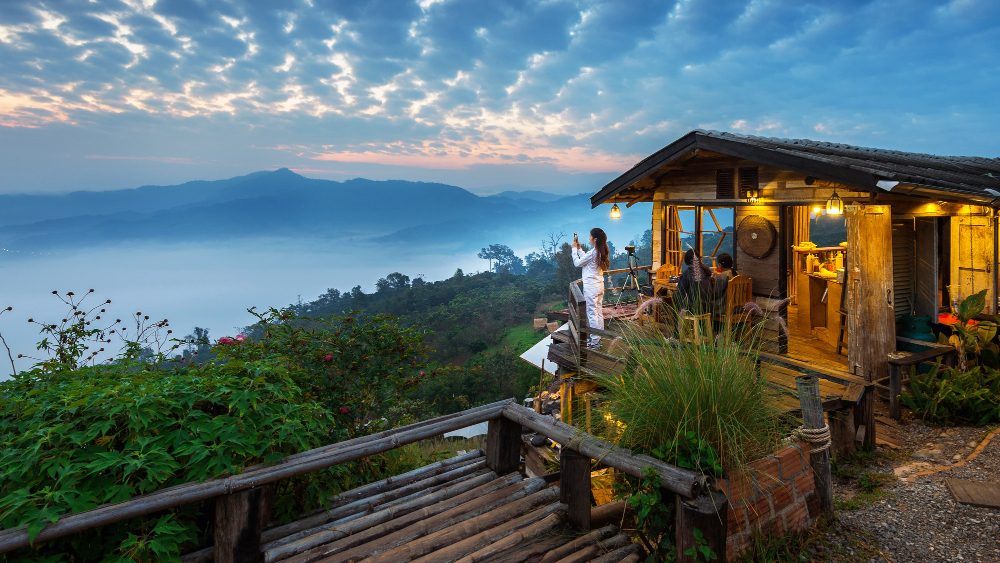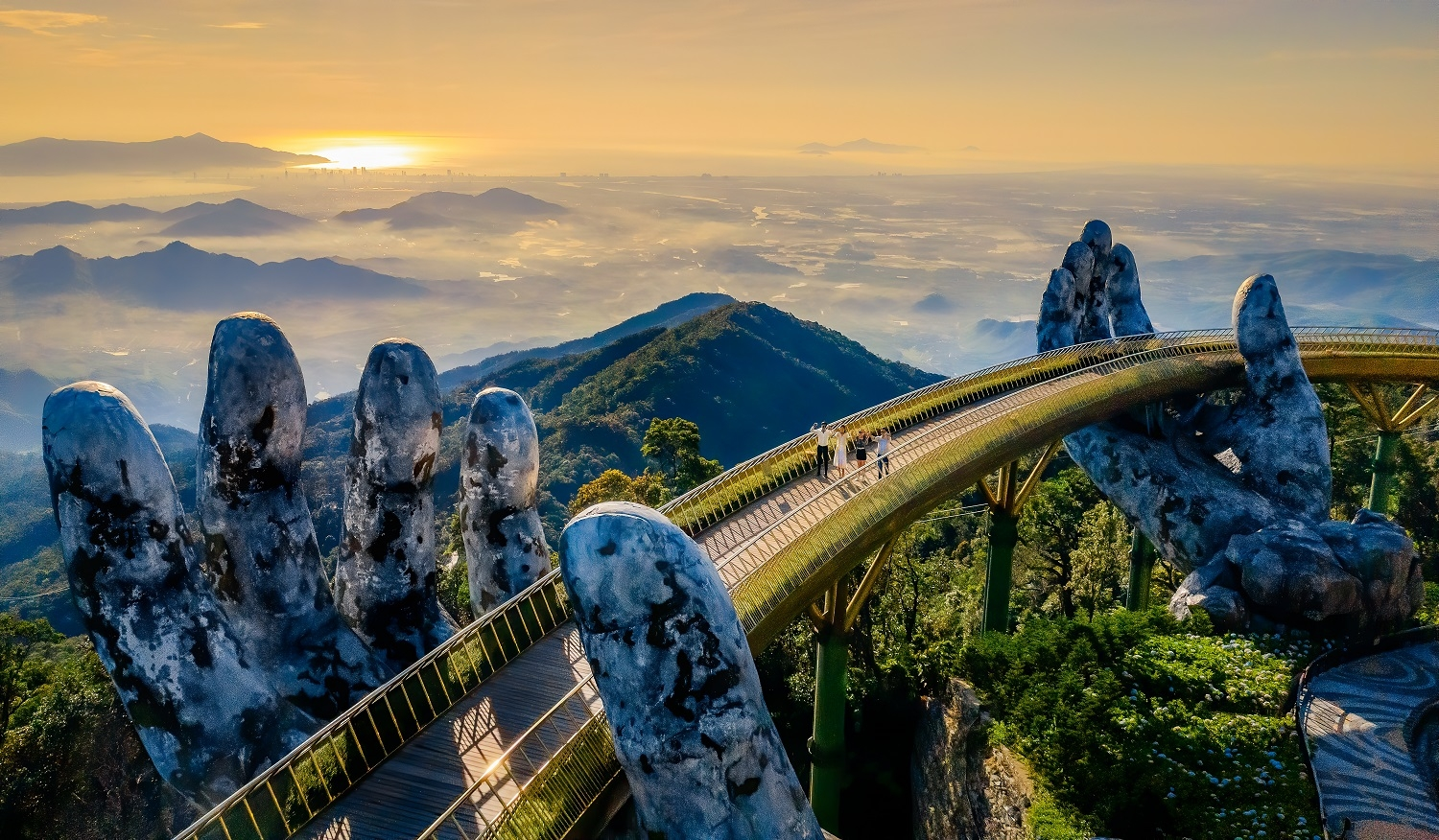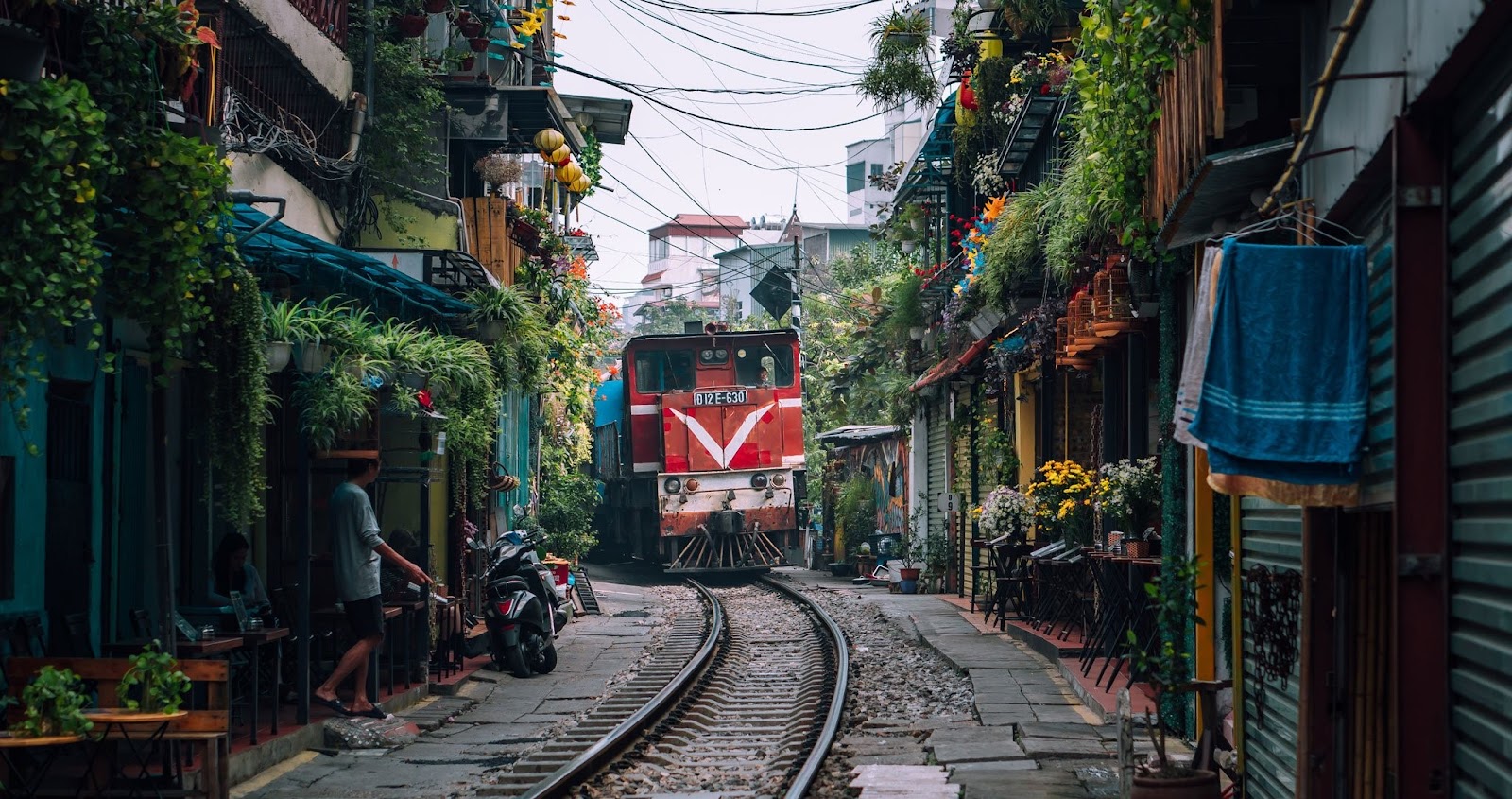
Pakhi Gupta
Top Adventure Activities in Vietnam for Couples | Thrill & Romance
Explore the best Vietnam adventure activities for couples, from caving in Phong Nha to ziplining in Da Lat. Enjoy thrilling, romantic experiences together.
Read More



Pakhi Gupta
25/08/2025
Planning a trip to Vietnam from India might feel overwhelming at first, but it’s actually simpler than you think. With multiple flight options, easy visa processes, and affordable travel once you arrive, Vietnam is one of the most accessible destinations for Indian travelers. If you are wondering exactly how to travel to Vietnam from India, this guide gives you everything you need to know.
Vietnam is a land of contrasts, of modern cities filled with energy, quiet villages where time slows down, and landscapes that range from mountains to beaches. From Halong Bay’s limestone cliffs to the lantern-lit streets of Hoi An, every corner of the country has something unique to offer.
For Indian travelers, two things matter most: flights and visas. Understanding the India to Vietnam flight distance, flight options, and the India to Vietnam flight duration makes the first step clear. Add to that the simple visa process, and you are all set for a smooth journey.
Here we will cover flights, visas, transportation, hotels, activities, and dining, all in one place. Whether you are a budget traveler or a luxury seeker, by the end, you’ll have the perfect plan for your Vietnam trip.

Flying is the easiest way to get to Vietnam. The India to Vietnam flight distance is about 3,200 km, making the India to Vietnam flight duration around 4-5 hours for direct flights. That makes Vietnam one of the closest international destinations from India.
Flights operate from major Indian states, including Delhi, Mumbai, Kolkata, Bangalore, and Ahmedabad. Direct routes are offered by VietJet Air, Vietnam Airlines, and IndiGo. If you prefer indirect flights, airlines like Singapore Airlines, Thai Airways, and Malaysia Airlines provide options with layovers in their hubs.
You will likely land in one of Vietnam’s three main international airports, Noi Bai International Airport in Hanoi, Tan Son Nhat International Airport in Ho Chi Minh City, or Da Nang International Airport. Each is well connected to the rest of the country by trains, buses, and domestic flights.
Direct flights save time and are convenient, while indirect flights sometimes give you better prices or flexible schedules. Either way, getting from India to Vietnam has never been easier.
Cost of flights from India to Vietnam
Vietnam makes it easy for Indian travelers with two main visa options: e-visas and visas on arrival. The e-visa is the simplest choice as it is entirely online, valid for 30 days, and usually processed in 3–5 working days. You apply through the official portal, upload your documents, and wait for the approval letter.
The visa-on-arrival is another popular option. For this, you need to get a pre-approval letter from a Vietnamese travel agency before your trip. Once you arrive at the airport, you present the letter, passport photos, and your passport at the immigration desk to get your visa stamped.
Both options are quick and reliable. Just make sure your passport is valid for at least six months and has a couple of blank pages. If you are someone who prefers avoiding queues, the e-visa is the better choice.
With such an easy process, the visa won’t slow down your plans. It’s one of the reasons Vietnam has become such a favorite destination for Indian travelers.
.Cost of Vietnam Visa for Indians
Getting around Vietnam is simple and affordable, with plenty of options to suit every traveler. From scooters and Grab bikes for short city rides to buses, trains, and flights for longer journeys, you can explore the country with ease. Taxis and ride-hailing apps also make travel comfortable and hassle-free.
They are everywhere in Vietnam, and renting one is the easiest way to move around cities and small towns. Scooters are cheap, fun, and give you the freedom to explore hidden corners. However, traffic can feel overwhelming for first-time visitors, especially in Hanoi or Ho Chi Minh City. Always wear a helmet and drive carefully. In quieter areas, like Hoi An or Hue, scooters are the perfect choice as they are a short trip.
They are a comfortable option if you prefer not to drive yourself. Companies like Mai Linh and Vinasun are reliable, and their cabs run on meters. They are perfect for airport transfers, shopping trips, or late-night rides. Just be careful of unlicensed taxis or cabs, as they may charge you more. For groups or families, cabs are often the most convenient way to get around.
Grab is Vietnam’s version of Uber and is used by both locals and tourists. With the app, you can book cars or even a motorbike at a fixed price, which removes the hassle of bargaining. It also allows you to pay by card or cash, which is very flexible. For first-time visitors, Grab is one of the safest and most affordable ways to move around cities. It is available everywhere, especially in big cities.
They are the cheapest way to travel both within and between cities. City buses are frequent, though routes can be confusing if you don’t know Vietnamese. For longer distances, sleeper buses are very popular among budget travelers. They run overnight and allow you to save on accommodation. While they may not be the most comfortable, they’re great value for money and take you across the country easily.
Trains in Vietnam are slower than buses or flights, but they are a scenic and memorable way to travel. The coastal route between Hue and Da Nang is often considered one of the most beautiful train journeys in the world. The famous Reunification Express connects Hanoi and Ho Chi Minh City with multiple stops. Overnight sleeper cabins are available, giving you a relaxed journey. If you are not in a rush, trains are worth the experience.
Hotels in Vietnam cater to every kind of traveler, whether you are looking for budget-friendly stays, boutique charm, or luxury resorts by the beach. With warm hospitality and great value for money, you will always find a stay that fits your style and budget.

Vietnam is full of experiences, from cruising through Halong Bay and trekking in Sapa to exploring ancient towns and lively street markets. Whether you love nature, culture, or food, there’s always something exciting to do at every stop.
A cruise in Halong Bay is one of Vietnam’s best experiences. The blue waters combined with limestone cliffs give you a breathtaking view. Cruises include adventure activities like kayaking, cave explorations, and offer fresh seafood dinners onboard. An overnight cruise lets you see the bay at sunrise, which is truly magical.
Halong Bay cruise prices in INR vary greatly depending on the type of cruise, duration, and level of luxury. Day trips can start from around ₹5,629, while 2-day, 1-night cruises range from ₹9,353 to ₹25,980, and 3-day, 2-night cruises can cost between ₹17,839 and ₹47,631. Luxury cruises naturally come with a higher price tag.
Walking through the streets of Hanoi’s Old Quarter gives you the chance to explore history. The narrow lanes are filled with vendors, local shops, and traditional houses. You will find endless food stalls serving pho, banh mi, and Vietnamese coffee. It is the best place to experience local culture. Also, try egg coffee in a tiny cafe tucked into the alleys.
To explore Hanoi's Old Quarter and find things to do, you can visit historical sites like Hoan Kiem Lake, the Bach Ma Temple, and the temple on Ngoc Son island. Enjoy the bustling atmosphere and local goods at the indoor Dong Xuan Market.
Located in northern Vietnam, it is known for its beautiful rice terraces and traditional villages. Trekking in Sapa takes you through breathtaking mountain scenery and fields that change colors with the seasons. Staying in a local homestay lets you connect with the people and their culture. The fresh air of the mountains and welcoming locals make Sapa a perfect place for relaxing.
Sapa trekking tours start from ₹2,000 for a 1-day trip to ₹5,000 for a 2-day homestay tour, though prices vary significantly based on tour duration, private vs. group, and specific activities like Fansipan mountain treks, which can cost ₹7,000 or more.
This cave is one of the largest in the world, which consists of underground rivers, giant chambers, and limestone formations. Tours range from easy cave walks to adventurous multi-day treks. The landscapes inside feel surreal and showcase nature’s raw power. Visiting Phong Nha is a must for those who love geology, exploration, and untouched nature.
The entry fee for Phong Nha Cave is ₹500 per adult, with a fee of ₹250 for children and free entry for those under 1.1m in height.
In southern Vietnam, the Mekong Delta is known as the “rice bowl” of the country. A boat ride takes you through canals, floating markets, and riverside villages where you can see locals selling fruits and goods directly from their boats. It is a peaceful and lively experience that shows you the villagers' way of living. The Mekong Delta is best explored slowly, soaking in its calm beauty.
A one-day Mekong Delta boat tour from Ho Chi Minh City typically costs between ₹2,000 and ₹13,000, with private and luxury options being more expensive, while overnight river cruises can range from ₹15,500 to over ₹3.7 lakh depending on the duration and level of luxury. The cost varies significantly based on whether you choose a full-day small-group tour, a full-day private tour, or a multi-day cruise.
Dining in Vietnam is a treat, with street food stalls, cozy cafes, and fine dining all offering bold flavors at great prices. From a hot bowl of pho to a crispy banh mi, every meal feels like a new discovery.
Traveling to Vietnam from India is easier. With short flights, multiple options for airlines, and easy visas on arrival, it is a destination that is accessible and hassle-free. The India to Vietnam flight duration and the India to Vietnam flight distance make it clear why so many Indians are choosing it as their next trip.
Once you arrive, Vietnam welcomes you with affordable transport, cozy boutique hotels, exciting activities, and food that ranges from street snacks to fine dining. It is a country that lets you enjoy both budget travel and luxury without compromise.
From the peaceful Mekong Delta to the lively streets of Hanoi, Vietnam has something for everyone. Each city and region offers a new experience, whether it’s history, culture, nature, or cuisine. Few destinations pack so much variety into one trip.
So if you have been wondering how to travel to Vietnam from India, this guide gives you all the answers. All that’s left is for you to book your tickets, plan your route, and get ready for an unforgettable adventure. For an easier start, you can explore some of the best Vietnam tour packages that cover the country’s highlights while keeping your trip stress-free.
For Indian travelers, getting a Vietnam visa is quite simple and affordable. The E-Visa option, valid for 30 days with a single entry, costs around ₹2,100. Another choice is the Visa on Arrival, where you’ll need an approval letter and a stamping fee. This usually comes to about ₹2,500-3,300, depending on the service you choose.
Vietnam is surprisingly easy on the pocket for Indian travelers. It offers plenty of budget-friendly choices along with comfortable mid-range and luxury options. For a 7–10 day holiday, you can expect to spend anywhere between ₹35,000 and ₹1,00,000, depending on your preferences and travel style.
The best time to plan a trip to Vietnam is in spring from March to April or autumn from September to November. During these months, the weather is comfortable with mild temperatures and little rainfall, which makes it perfect for sightseeing, outdoor activities, and enjoying the country’s beautiful landscapes.
Vietnam is known for its breathtaking natural beauty, from the limestone cliffs of Ha Long Bay to the lush terraced rice fields in the north. Its food is another highlight, whether it’s a steaming bowl of pho or a crispy banh mi, every meal feels like a treat. The country also has a rich history, vibrant culture, and some of the warmest, friendliest people you’ll meet. Travelers are often charmed by its historic towns, bustling floating markets, and the unique coffee culture that’s a big part of daily life.